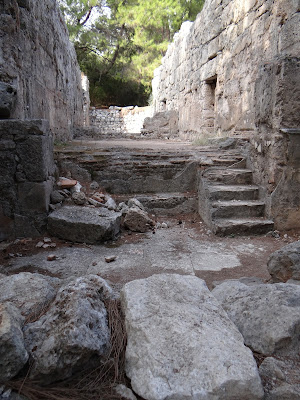It seems fitting somehow that I kicked off my sabbatical year during summer 2013 by attending the SEFS conference in Germany, and then in October 2014 I traveled back to Europe for the 8th International Shallow Lakes Conference held in Antalya, Turkey (http://shallowlakes2014.org/). It feels as if the professional part of my year abroad is complete, having closed the loop.
Last year, I presented at SEFS in July, gave invited talks in Scotland in Oct, at Trinity in Nov, and talks in two different departments at Queen's in Feb and March. All of these international presentations gave me lots of experience giving longer seminars to broad audiences, as well as helped to build my professional network. As a result, I was invited to give a landscape limnology plenary/keynote address at the 8th International Shallow Lakes Conference in Turkey. What an honor! I also agreed to give a lunchtime workshop about how to make and maintain high-performing research teams while at the conference.
Last year, I presented at SEFS in July, gave invited talks in Scotland in Oct, at Trinity in Nov, and talks in two different departments at Queen's in Feb and March. All of these international presentations gave me lots of experience giving longer seminars to broad audiences, as well as helped to build my professional network. As a result, I was invited to give a landscape limnology plenary/keynote address at the 8th International Shallow Lakes Conference in Turkey. What an honor! I also agreed to give a lunchtime workshop about how to make and maintain high-performing research teams while at the conference.
I awoke Monday morning to see the Turkish landscape for the 1st time. The conference was in a fancy 5 star resort hotel on the Mediterranean (http://www.akkaantedon.com/). From my balcony, I saw steep mountains in one direction and the Sea in the other.
This conference was extremely international. There were ~300 in attendance and I met people from Brazil, Mexico, Ethiopia, Australia, Canada (I was one of a handful of people from the U.S.), China, Singapore, Japan, and ALL OVER Europe. The conference was also very social, allowing me to meet a lot of great scientists - they had an opening banquet Sun night, a Latin dance Mon night, a beach party Tues night, and a gala dinner and dance Thurs night. These shallow lake ecologists definitely know how to have fun (and dance) after a long day of science!
My plenary and workshop both went well, with ~200 and 35 people attending each, respectively. People asked me a lot of questions after each, and I had many conversations afterwards about the topics I presented. Because some of the scientists at this conference do not work at very broad scales (e.g., they tend to work on one to a handful of lakes at a time), my landscape limnology talk presented them with some different ideas to think about. Overall, being at the conference was intellectually stimulating - I even got a new idea for a research project that I will propose to my CSI Limnology group related to shallow lakes!
One day, the whole conference took off on excursions to see the area. I went on one that went to Phaselis, Mount Chimaera, and Omlypos. The countryside is just beautiful. So many olive, citrus, and pomegranate trees… and very dramatic vistas of mountains and beaches. We were lucky weather-wise, it poured rain while we were on the bus between two different stops, but cleared up for our hikes. Phaselis was mainly strolling thru old ruins (the theatre was especially neat) - https://en.wikipedia.org/wiki/Phaselis.
Mount Chimaera was a really nice hike up to an area with methane emissions that are on fire (lots of mythology there!) and back - https://en.wikipedia.org/wiki/Mount_Chimaera.
Olympos was this really expansive ancient city - the ruins were in amongst the forest and along a river all the way out to the Sea and even along the beach and on cliffs (https://en.wikipedia.org/wiki/Olympos_(Lycia)). We only saw a small part of it, and it was amazing.
We also had an hour on the beach at Olympos. Here are two articles about this beach and area from the Guardian: http://www.theguardian.com/travel/2012/aug/22/turkey-guesthouse-budget-beach and the Telegraph: http://www.telegraph.co.uk/travel/bestbeaches/7634792/Best-beaches-in-Turkey-Olympos-Antalya.html.
Mount Chimaera was a really nice hike up to an area with methane emissions that are on fire (lots of mythology there!) and back - https://en.wikipedia.org/wiki/Mount_Chimaera.
Olympos was this really expansive ancient city - the ruins were in amongst the forest and along a river all the way out to the Sea and even along the beach and on cliffs (https://en.wikipedia.org/wiki/Olympos_(Lycia)). We only saw a small part of it, and it was amazing.
We also had an hour on the beach at Olympos. Here are two articles about this beach and area from the Guardian: http://www.theguardian.com/travel/2012/aug/22/turkey-guesthouse-budget-beach and the Telegraph: http://www.telegraph.co.uk/travel/bestbeaches/7634792/Best-beaches-in-Turkey-Olympos-Antalya.html.




























